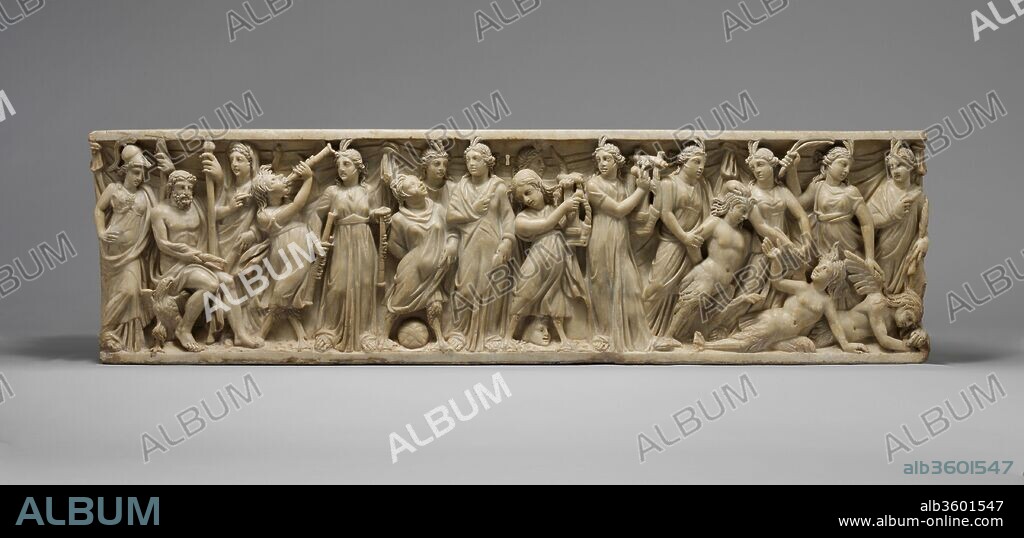alb3601547
Marble sarcophagus with the contest between the Muses and the Sirens

|
Ajouter à une autre Lightbox |
|
Ajouter à une autre Lightbox |



Avez-vous déjà un compte? S'identifier
Vous n'avez pas de compte ? S'inscrire
Acheter cette image.
Sélectionnez l'usage:

Titre:
Marble sarcophagus with the contest between the Muses and the Sirens
Légende:
Voir la traduction automatique
Marble sarcophagus with the contest between the Muses and the Sirens. Culture: Roman. Dimensions: Overall: 21 3/4 x 77 1/4 x 22 1/2 in. (55.3 x 196.2 x 57.2 cm). Date: 3rd quarter of 3rd century A.D..
The deities Athena, Zeus, and Hera, assembled at the far left, preside over a musical contest betweenthe Muses and Sirens. The Muses, associated with
the highest intellectual and artistic aspirations, are defeating the Sirens, creatures that are half woman and half bird who lured men to destruction with their song.
A drawing of the sarcophagus was commissioned by Cassiano dal Pozzo, one of the most respected patrons of art and scholarship in Rome during the first half of the seventeenth century. It belonged at that time to the del Nero family, who apparently converted it into a chest with a keyhole cut into the upper center of the frontal panel and had their coat of arms, a rampant hound, carved on the short ends
of the sarcophagus.
Technique/matériel:
Marble, Pentelic
Période:
Late Imperial, Gallienic
Musée:
Metropolitan Museum of Art, New York, USA
Emplacement:
ROMAN EMPIRE
Crédit:
Album / Metropolitan Museum of Art, NY
Autorisations:
Modèle: Non - Propriété: Non
Questions sur les droits?
Questions sur les droits?
Taille de l'image:
4800 x 2272 px | 31.2 MB
Taille d'impression:
40.6 x 19.2 cm | 16.0 x 7.6 in (300 dpi)
Mots clés:
 Pinterest
Pinterest Twitter
Twitter Facebook
Facebook Copier le lien
Copier le lien Email
Email
